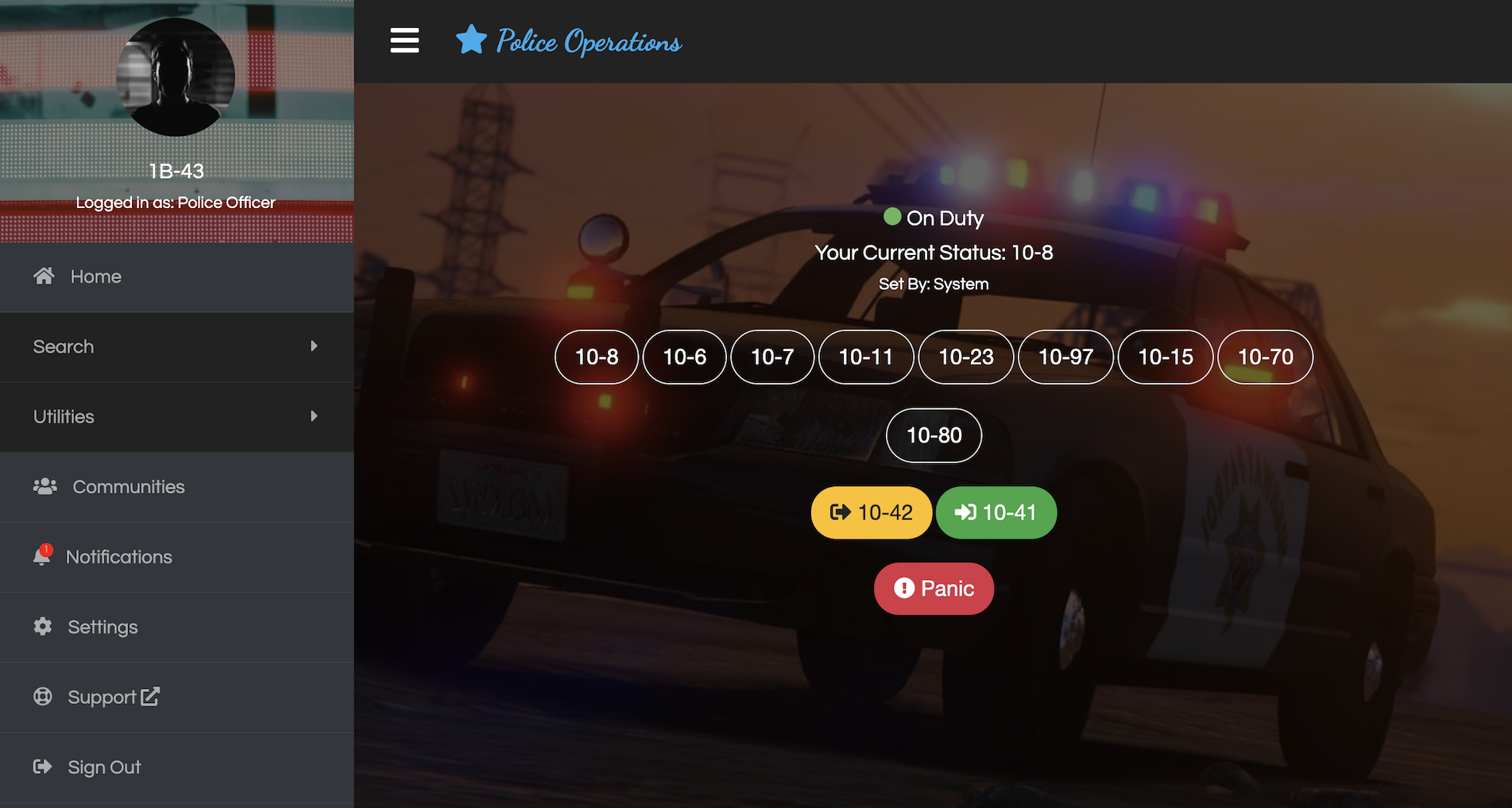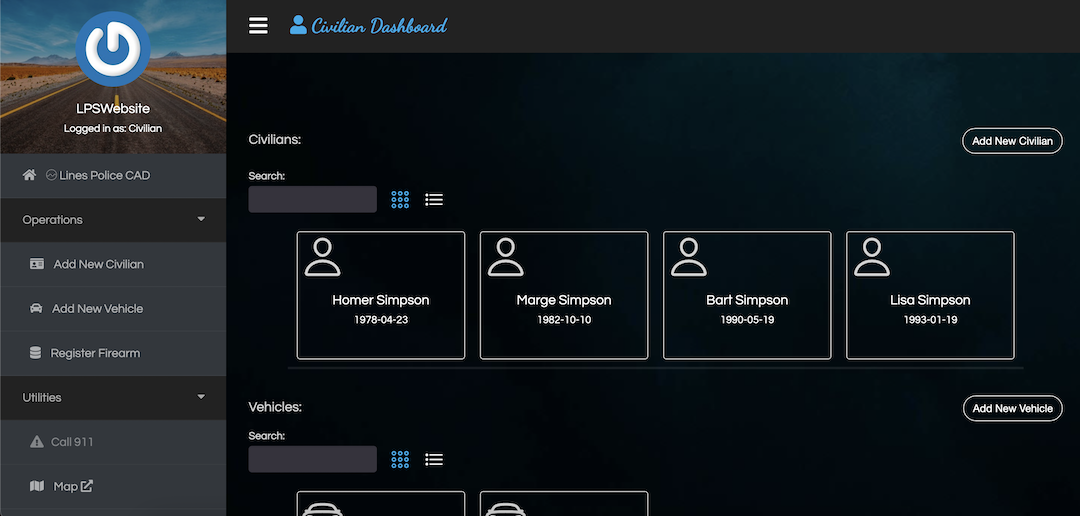Unlocking The Secrets Of Lines Police CAD: Your Ultimate Guide
Hey there, folks! Let’s dive right into something super interesting that’s been buzzing around in law enforcement circles lately. Lines police CAD is not just a tech term—it’s a game-changer for how police departments operate day-to-day. Think about it: every time you see a cop car zooming by or a dispatcher coordinating efforts, there’s a powerful system behind the scenes making it all happen. And guess what? That system is often referred to as a Computer-Aided Dispatch (CAD) with lines connecting the dots. So, buckle up because we’re about to break it all down for you!
In today’s world, technology plays a massive role in public safety, and police CAD systems are at the heart of it all. These systems aren’t just fancy software; they’re lifelines for officers in the field and dispatchers managing emergencies. Whether it’s tracking patrol cars, logging incidents, or coordinating responses, CAD systems are the backbone of modern policing. But what exactly are these lines in police CAD, and why should you care? Stick around, and we’ll spill all the tea!
Before we dive deeper, let me drop a quick fact: the global CAD market is projected to grow significantly in the coming years. Why? Because these systems are becoming smarter, faster, and more integrated than ever before. So, if you’re curious about how police departments keep things running smoothly, you’re in the right place. Let’s get into it!
Read also:Unveiling The Mysteries Of Tobraut Indo A Deep Dive Into The Trending Phenomenon
What Are Lines Police CAD Systems and Why Do They Matter?
Alright, let’s break it down. When we talk about lines police CAD, we’re referring to the intricate networks and pathways that connect various components of a police department’s dispatch system. Think of it like a digital highway where information flows seamlessly between dispatchers, officers in the field, and other critical stakeholders. These lines ensure that everyone stays connected and informed, no matter the situation.
Now, why are these lines so important? Well, imagine this: a dispatcher receives a call about a robbery in progress. Without a reliable CAD system, coordinating a response could take minutes—or worse, lead to confusion. But with a CAD system in place, the dispatcher can instantly alert nearby officers, provide real-time updates, and even track their progress as they head to the scene. It’s all about efficiency, accuracy, and saving lives.
Here’s a quick rundown of what these lines do:
- Facilitate real-time communication between dispatchers and officers.
- Enable the tracking of patrol cars and their locations.
- Provide access to critical databases, such as criminal records and vehicle registrations.
- Streamline incident reporting and documentation.
So, whether you’re a tech enthusiast or just curious about how police departments operate, understanding these lines is key to grasping the bigger picture. Let’s keep rolling!
How Do Police CAD Systems Work?
The Backbone of Modern Policing
Let’s get into the nitty-gritty of how these systems actually work. At its core, a police CAD system is designed to streamline communication and coordination within a department. When a call comes in, the dispatcher enters the details into the system, which then assigns the call to the nearest available officer. This process happens in seconds, thanks to those crucial lines connecting everything.
But it doesn’t stop there. Once an officer is dispatched, the system continues to track their progress, update their status, and provide any additional information they might need. It’s like having a personal assistant that never sleeps and always has your back.
Read also:Johnny Mathis Husband The Untold Story Youve Been Missing
Key Features of CAD Systems
Now, let’s talk about some of the key features that make these systems so powerful:
- Mapping and GPS Integration: Officers can see their exact location on a map, along with the locations of other units in the area.
- Incident Management: Every call is logged and documented, creating a detailed record of each incident.
- Database Access: Officers can quickly access vital information, such as criminal histories and vehicle registrations, directly from their in-car systems.
- Real-Time Updates: Dispatchers and officers can communicate in real-time, ensuring everyone is always on the same page.
These features might sound simple, but they add up to create a powerful tool that enhances public safety in countless ways. And let’s not forget those lines—we’d be lost without them!
Benefits of Using CAD Systems in Law Enforcement
So, what’s in it for the police department? The benefits of using CAD systems are numerous, and they go far beyond just improving communication. Here are a few of the biggest advantages:
- Increased Efficiency: Officers spend less time on paperwork and more time in the field.
- Improved Response Times: With real-time tracking and updates, response times are faster than ever.
- Enhanced Accountability: Every action is logged and documented, ensuring transparency and accountability.
- Better Resource Allocation: Departments can deploy resources more effectively, ensuring the right officers are in the right places at the right times.
It’s not just about technology—it’s about making a real difference in how police departments operate. And when you think about it, those lines are the unsung heroes of the whole system. They keep everything connected and running smoothly, even in the most chaotic situations.
Challenges and Limitations of CAD Systems
Not All Systems Are Created Equal
While CAD systems are incredibly powerful, they’re not without their challenges. One of the biggest issues is compatibility. Not all systems are designed to work seamlessly with one another, which can create headaches for departments that rely on multiple platforms. Plus, there’s always the risk of technical glitches or system failures, which can be catastrophic in emergency situations.
Another challenge is training. Officers and dispatchers need to be well-versed in how to use these systems effectively, which requires ongoing education and support. And let’s not forget the cost—implementing and maintaining a CAD system can be a significant investment for any department.
Overcoming These Hurdles
Despite these challenges, many departments are finding ways to overcome them. By partnering with tech companies and investing in robust training programs, they’re ensuring that their systems are as effective as possible. And as technology continues to evolve, we can expect these systems to become even more advanced and user-friendly.
The Future of Police CAD Systems
Looking ahead, the future of CAD systems is bright. With advancements in AI, machine learning, and IoT, we’re likely to see even more sophisticated systems that can predict crime patterns, optimize resource allocation, and enhance officer safety. Imagine a system that can anticipate where crimes are most likely to occur and deploy resources accordingly—pretty cool, right?
And let’s not forget about the lines. As technology continues to evolve, these lines will become even more robust and reliable, ensuring that communication never falters. It’s an exciting time for law enforcement technology, and we can’t wait to see what’s next.
Real-Life Examples of CAD Systems in Action
Success Stories from Around the World
There are plenty of real-life examples of CAD systems making a difference. Take the New York Police Department, for instance. Their CAD system is one of the most advanced in the world, allowing them to respond to emergencies quickly and efficiently. Or consider the Los Angeles Police Department, which uses its CAD system to track gang activity and prevent violent crime.
These success stories aren’t just limited to big cities, either. Smaller departments are also finding ways to leverage CAD technology to enhance public safety. Whether it’s tracking stolen vehicles or responding to domestic violence calls, these systems are proving their worth time and time again.
Data and Statistics to Back It Up
According to a recent report by MarketsandMarkets, the global CAD market is expected to grow from $2.5 billion in 2020 to $4.5 billion by 2025. That’s a compound annual growth rate (CAGR) of 12.3%. Why the growth? Because departments are recognizing the value of these systems and investing accordingly.
Another study found that departments using CAD systems experienced a 20% reduction in response times and a 15% increase in officer efficiency. Those are some pretty impressive numbers, and they speak volumes about the impact these systems can have.
Expert Insights on Police CAD Systems
We reached out to a few experts in the field to get their take on CAD systems. One dispatcher we spoke with said, “Having a reliable CAD system is like having a safety net. It ensures that we’re always connected and informed, no matter what’s happening on the ground.”
Another officer added, “The real-time updates are a game-changer. Knowing exactly where my fellow officers are and what’s happening at the scene makes a huge difference in how we approach each situation.”
Final Thoughts: Why You Should Care About Lines Police CAD
So, there you have it—a deep dive into the world of lines police CAD. Whether you’re a tech enthusiast, a law enforcement professional, or just someone who cares about public safety, understanding these systems is crucial. They’re not just tools—they’re lifelines that keep our communities safe and secure.
As we’ve seen, the benefits of CAD systems are numerous, from improved efficiency to enhanced accountability. But they’re not without their challenges, and that’s where ongoing innovation and investment come into play. By continuing to push the boundaries of what these systems can do, we can ensure that they remain at the forefront of modern policing.
So, what’s next? We encourage you to leave a comment, share this article, or explore other resources on our site. Together, we can keep the conversation going and make a real difference in how we approach public safety. Thanks for joining us on this journey—stay safe out there!
Table of Contents
- What Are Lines Police CAD Systems and Why Do They Matter?
- How Do Police CAD Systems Work?
- Benefits of Using CAD Systems in Law Enforcement
- Challenges and Limitations of CAD Systems
- The Future of Police CAD Systems
- Real-Life Examples of CAD Systems in Action
- Data and Statistics to Back It Up
- Expert Insights on Police CAD Systems
- Final Thoughts: Why You Should Care About Lines Police CAD


